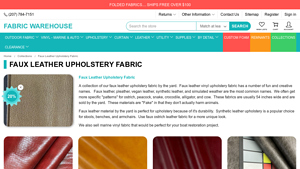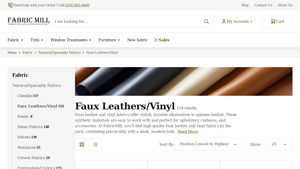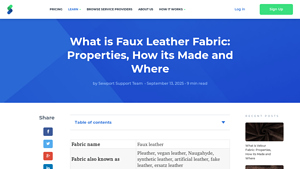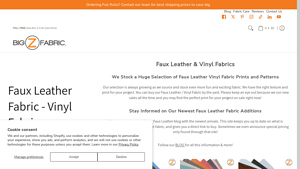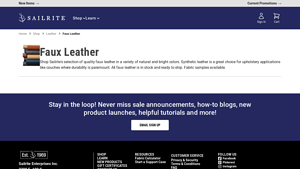Introduction: Navigating the Global Market for synthetic leather upholstery fabric
Navigating the global market for synthetic leather upholstery fabric presents a unique challenge for B2B buyers, especially when sourcing high-quality materials that balance durability, aesthetics, and cost-effectiveness. As companies in Africa, South America, the Middle East, and Europe, including Nigeria and Brazil, seek reliable upholstery solutions, understanding the diverse types of synthetic leather—such as PU leather and PVC vinyl—becomes crucial. This comprehensive guide delves into the various applications of synthetic leather, from residential and commercial furniture to automotive and marine uses, ensuring that you are well-informed about your options.
Throughout this guide, we will explore essential factors such as supplier vetting processes, material specifications, and cost considerations, enabling you to make educated purchasing decisions. By equipping international buyers with the knowledge to identify reputable suppliers and assess product quality, this resource aims to streamline your sourcing journey. The insights provided will not only enhance your understanding of synthetic leather upholstery fabric but also empower you to select the best materials for your specific needs. Whether you’re aiming to reduce costs, improve product performance, or find sustainable alternatives, this guide serves as your roadmap to success in the synthetic leather market.
Table Of Contents
- Top 5 Synthetic Leather Upholstery Fabric Manufacturers & Suppliers List
- Introduction: Navigating the Global Market for synthetic leather upholstery fabric
- Understanding synthetic leather upholstery fabric Types and Variations
- Key Industrial Applications of synthetic leather upholstery fabric
- 3 Common User Pain Points for ‘synthetic leather upholstery fabric’ & Their Solutions
- Strategic Material Selection Guide for synthetic leather upholstery fabric
- In-depth Look: Manufacturing Processes and Quality Assurance for synthetic leather upholstery fabric
- Practical Sourcing Guide: A Step-by-Step Checklist for ‘synthetic leather upholstery fabric’
- Comprehensive Cost and Pricing Analysis for synthetic leather upholstery fabric Sourcing
- Alternatives Analysis: Comparing synthetic leather upholstery fabric With Other Solutions
- Essential Technical Properties and Trade Terminology for synthetic leather upholstery fabric
- Navigating Market Dynamics and Sourcing Trends in the synthetic leather upholstery fabric Sector
- Frequently Asked Questions (FAQs) for B2B Buyers of synthetic leather upholstery fabric
- Strategic Sourcing Conclusion and Outlook for synthetic leather upholstery fabric
- Important Disclaimer & Terms of Use
Understanding synthetic leather upholstery fabric Types and Variations
| Type Name | Key Distinguishing Features | Primary B2B Applications | Brief Pros & Cons for Buyers |
|---|---|---|---|
| PU Leather | Soft, supple texture; resembles genuine leather; water-resistant | Furniture upholstery, automotive interiors, marine applications | Pros: Cost-effective, easy to clean. Cons: May not have the same prestige as real leather. |
| PVC Leather | Glossy finish; often more affordable; durable and water-resistant | Commercial furniture, healthcare facilities, outdoor furniture | Pros: Economical, available in diverse colors. Cons: Less breathable, can feel less premium. |
| Microfiber Leather | Soft, suede-like texture; highly durable; stain-resistant | High-end furniture, automotive interiors, fashion accessories | Pros: Luxurious feel, excellent durability. Cons: Higher price point compared to PU and PVC. |
| Eco-Friendly Leather | Made from recycled materials; biodegradable options available | Sustainable furniture brands, eco-conscious automotive interiors | Pros: Environmentally friendly, unique aesthetics. Cons: Limited availability, can be more expensive. |
| Leatherette | Synthetic blend with a leather-like appearance; easy to maintain | Budget furniture, promotional items, temporary installations | Pros: Affordable, wide variety of styles. Cons: Less durable than other types, may not last long-term. |
What Are the Characteristics of PU Leather for B2B Buyers?
PU leather, or polyurethane leather, offers a soft and supple texture that closely mimics genuine leather. It is water-resistant and easy to clean, making it a popular choice for various applications, including furniture upholstery and automotive interiors. B2B buyers should consider the cost-effectiveness of PU leather, as it can be up to 75% less expensive than real leather. When purchasing, look for quality certifications to ensure durability and performance, especially for high-traffic areas.
How Does PVC Leather Stand Out in the Market?
PVC leather, known for its glossy finish, is often favored for its affordability and durability. It is widely used in commercial settings such as healthcare facilities and outdoor furniture due to its water-resistant properties. B2B buyers should be aware that while PVC leather is economical and available in a variety of colors, it may lack breathability, which could be a consideration for comfort in certain applications. Assessing the longevity and application suitability is crucial for making informed purchasing decisions.
Why Choose Microfiber Leather for Premium Applications?
Microfiber leather offers a luxurious, suede-like texture and exceptional durability, making it ideal for high-end furniture and automotive interiors. Its stain-resistant properties further enhance its appeal in environments where aesthetics and maintenance are critical. B2B buyers should weigh the higher price point against the long-term benefits of durability and appearance. When sourcing microfiber leather, ensure that it meets industry standards for quality and performance, particularly for upscale applications.
What Are the Advantages of Eco-Friendly Leather Options?
Eco-friendly leather is made from recycled materials and may include biodegradable options, appealing to environmentally conscious brands. This type of synthetic leather is increasingly used in sustainable furniture and automotive interiors. Buyers should consider the unique aesthetics and sustainability credentials of eco-friendly leather, as these features can enhance brand reputation. However, availability may be limited, and prices can be higher, so it’s essential to evaluate supply chain capabilities and market demand.
How Does Leatherette Compare with Other Synthetic Leathers?
Leatherette is a synthetic blend designed to resemble leather while being easy to maintain and affordable. It is commonly used for budget furniture and promotional items. While leatherette provides a wide variety of styles and colors, B2B buyers should note that it may not be as durable as other synthetic options, which could impact long-term usage. When purchasing leatherette, consider the intended application and potential wear and tear to ensure it meets project requirements.
Key Industrial Applications of synthetic leather upholstery fabric
| Industry/Sector | Specific Application of synthetic leather upholstery fabric | Value/Benefit for the Business | Key Sourcing Considerations for this Application |
|---|---|---|---|
| Furniture Manufacturing | Residential and Commercial Upholstery | Cost-effective, durable, and easy to maintain | Quality standards, color variety, and bulk purchasing options |
| Automotive | Vehicle Interior Upholstery | Enhanced durability and aesthetic appeal | Compliance with automotive standards and performance features |
| Hospitality | Seating for Restaurants and Hotels | High resistance to stains and wear, aesthetic versatility | Fire-retardant properties and design customization options |
| Marine Industry | Boat and Yacht Upholstery | Water-resistant and mildew-resistant characteristics | UV resistance and compliance with marine safety regulations |
| Healthcare | Upholstery for Medical Furniture | Easy to clean, antimicrobial properties | Compliance with health regulations and durability standards |
How Is Synthetic Leather Upholstery Fabric Used in Furniture Manufacturing?
In the furniture manufacturing sector, synthetic leather upholstery fabric is widely utilized for both residential and commercial applications. Its cost-effectiveness—often up to 75% less than genuine leather—makes it an attractive option for businesses looking to maximize margins. The durability of synthetic leather also addresses common issues such as wear and tear, making it suitable for high-traffic areas. Buyers from regions like Africa and South America should prioritize sourcing options that offer a variety of colors and textures to meet diverse consumer preferences.
What Are the Applications of Synthetic Leather in the Automotive Industry?
In the automotive sector, synthetic leather is increasingly favored for vehicle interiors, including seats and door panels. The material’s durability and aesthetic appeal help enhance the overall customer experience while providing a viable alternative to traditional leather. International buyers, particularly from the Middle East and Europe, must consider compliance with specific automotive standards, such as fire resistance and VOC emissions, when sourcing synthetic leather for vehicle upholstery.
How Does Synthetic Leather Benefit the Hospitality Sector?
The hospitality industry employs synthetic leather upholstery for seating in restaurants, hotels, and event spaces. Its high resistance to stains and ease of maintenance are critical for businesses that require long-lasting, visually appealing furnishings. Additionally, the wide range of available colors and textures allows for customization to match specific branding needs. Buyers should focus on sourcing materials that also meet fire-retardant regulations to ensure safety in public spaces.
Why Is Synthetic Leather Important for the Marine Industry?
In the marine industry, synthetic leather is essential for boat and yacht upholstery due to its water-resistant and mildew-resistant properties. These characteristics ensure longevity and maintain aesthetics even in harsh marine environments. Buyers in this sector, especially from coastal regions, should seek synthetic leather that complies with marine safety regulations and offers UV resistance to prevent fading from sun exposure.
How Is Synthetic Leather Used in Healthcare Upholstery?
In healthcare settings, synthetic leather upholstery is utilized for medical furniture, such as examination tables and waiting room chairs. The material’s easy-to-clean nature and potential antimicrobial properties are significant advantages in maintaining hygiene standards. Buyers in the healthcare industry must ensure that the sourced synthetic leather complies with health regulations and is durable enough to withstand frequent cleaning and use.
3 Common User Pain Points for ‘synthetic leather upholstery fabric’ & Their Solutions
Scenario 1: Difficulty in Choosing the Right Type of Synthetic Leather
The Problem: B2B buyers often struggle to choose the right type of synthetic leather for their specific applications due to the variety of options available. For instance, a buyer sourcing materials for high-traffic commercial furniture may be unsure whether to opt for PU leather or PVC vinyl. This indecision can lead to costly mistakes, such as selecting a material that doesn’t meet durability requirements, resulting in increased replacement costs and customer dissatisfaction.
The Solution: To effectively choose the right type of synthetic leather upholstery fabric, buyers should first assess the specific needs of their project. This includes considering the expected wear and tear, the environment in which the fabric will be used (indoor vs. outdoor), and any regulatory standards that need to be met. For high-traffic areas, selecting a contract-grade PU leather with enhanced abrasion resistance is advisable. Buyers should also request samples and perform physical tests to evaluate the fabric’s durability, stain resistance, and cleaning ease. Partnering with suppliers who offer detailed specifications and performance ratings can significantly aid in making informed decisions.
Scenario 2: Concerns About Environmental Impact
The Problem: As global awareness of sustainability increases, B2B buyers are increasingly concerned about the environmental impact of their materials. Synthetic leather, often perceived as less eco-friendly than natural leather, may raise red flags among buyers committed to sustainable practices. This concern is particularly pronounced in regions like Europe, where regulatory frameworks increasingly favor sustainable materials, making it imperative for businesses to align their sourcing with these values.
The Solution: Buyers can address sustainability concerns by sourcing eco-friendly synthetic leather options that use water-based adhesives and non-toxic dyes, thereby reducing the overall environmental footprint. Additionally, they should inquire about the supplier’s manufacturing processes and certifications related to sustainability, such as OEKO-TEX or Global Recycle Standard. Incorporating recycled materials in synthetic leather production is also a viable option. By choosing suppliers who prioritize sustainability, businesses can confidently promote their commitment to environmental responsibility while meeting market demands.
Scenario 3: Managing Inventory and Supply Chain Issues
The Problem: B2B buyers often face challenges in managing inventory and supply chain logistics, particularly when sourcing synthetic leather upholstery fabric in bulk. Fluctuations in demand can lead to overstocking or stockouts, resulting in financial strain and project delays. Buyers may also encounter issues with lead times, which can be extended due to global supply chain disruptions, impacting project timelines and client relationships.
The Solution: To effectively manage inventory and supply chain challenges, buyers should adopt a proactive approach by collaborating closely with suppliers to forecast demand accurately. Implementing just-in-time (JIT) inventory practices can help mitigate overstock issues. Additionally, diversifying the supplier base to include both local and international vendors can reduce dependency on a single source, thereby increasing flexibility. Regularly reviewing and adjusting contracts to include favorable terms for bulk orders and lead times can also enhance supply chain efficiency. Utilizing inventory management software can provide real-time insights into stock levels, helping buyers make informed decisions and streamline their operations.
Strategic Material Selection Guide for synthetic leather upholstery fabric
What Are the Key Materials Used in Synthetic Leather Upholstery Fabric?
When selecting synthetic leather upholstery fabric, understanding the various materials available is crucial for B2B buyers. The most common materials include Polyurethane (PU) leather, Polyvinyl Chloride (PVC) leather, and Microfiber leather. Each material has unique properties, advantages, and limitations that can significantly impact the end product’s performance and suitability for various applications.
How Does Polyurethane (PU) Leather Perform in Upholstery Applications?
Polyurethane (PU) leather is a popular choice for upholstery due to its soft texture and high durability. It is produced by coating a fabric backing with a flexible polymer, creating a product that closely resembles genuine leather. PU leather is resistant to water, stains, and mildew, making it easy to clean and maintain.
Pros: Its affordability—often up to 75% less than genuine leather—makes it a cost-effective option for manufacturers. Additionally, PU leather offers a wide range of colors and textures, allowing for creative flexibility in design.
Cons: However, PU leather may not perform as well in extreme temperatures, where it can become brittle over time. Buyers should also consider that while PU leather is durable, it may not have the same longevity as high-quality genuine leather.
Impact on Application: PU leather is suitable for various applications, including residential and commercial furniture, automotive interiors, and marine upholstery. Its easy cleanability makes it particularly appealing for environments requiring high hygiene standards.
Considerations for International Buyers: For buyers in regions like Africa and South America, it is essential to ensure compliance with local regulations regarding material safety and environmental impact. Standards such as ASTM or DIN may apply, depending on the application.
What Are the Benefits of Polyvinyl Chloride (PVC) Leather?
Polyvinyl Chloride (PVC) leather is another widely used synthetic leather option. It is created by layering a plastic coating over a fabric substrate, resulting in a durable and waterproof material.
Pros: PVC leather is highly resistant to wear and tear, making it suitable for high-traffic areas. It is also less expensive than PU leather, providing a budget-friendly option for manufacturers.
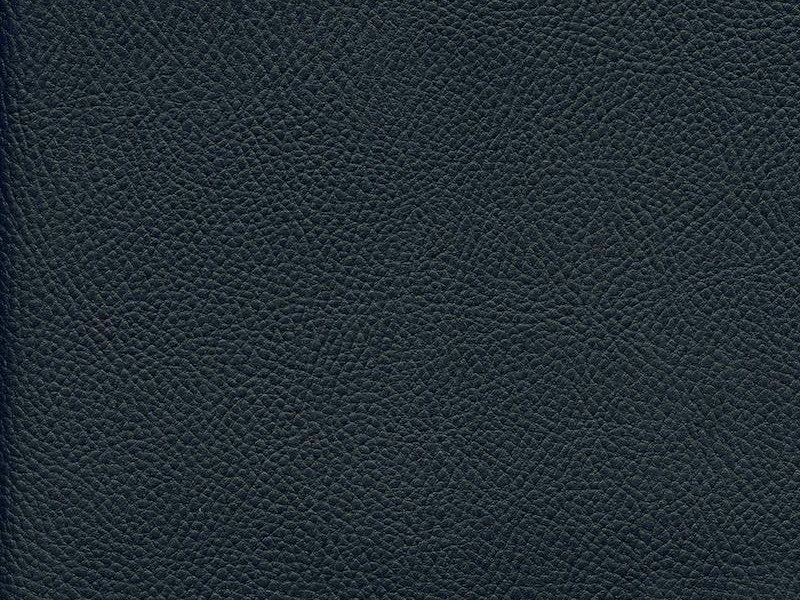
Illustrative image related to synthetic leather upholstery fabric
Cons: However, PVC leather can be less breathable than PU leather, which may lead to discomfort in certain applications, such as automotive seating. Additionally, it is less environmentally friendly due to the chlorine content in PVC.
Impact on Application: PVC leather is commonly used in commercial settings, such as restaurants and healthcare facilities, where durability and ease of cleaning are essential.
Considerations for International Buyers: Buyers should be aware of the varying environmental regulations concerning PVC in different regions. Compliance with local standards is critical, especially in Europe, where stricter regulations may apply.
How Does Microfiber Leather Compare in Synthetic Upholstery?
Microfiber leather, made from ultra-fine synthetic fibers, offers a luxurious look and feel similar to genuine leather. It is often treated to enhance its durability and stain resistance.
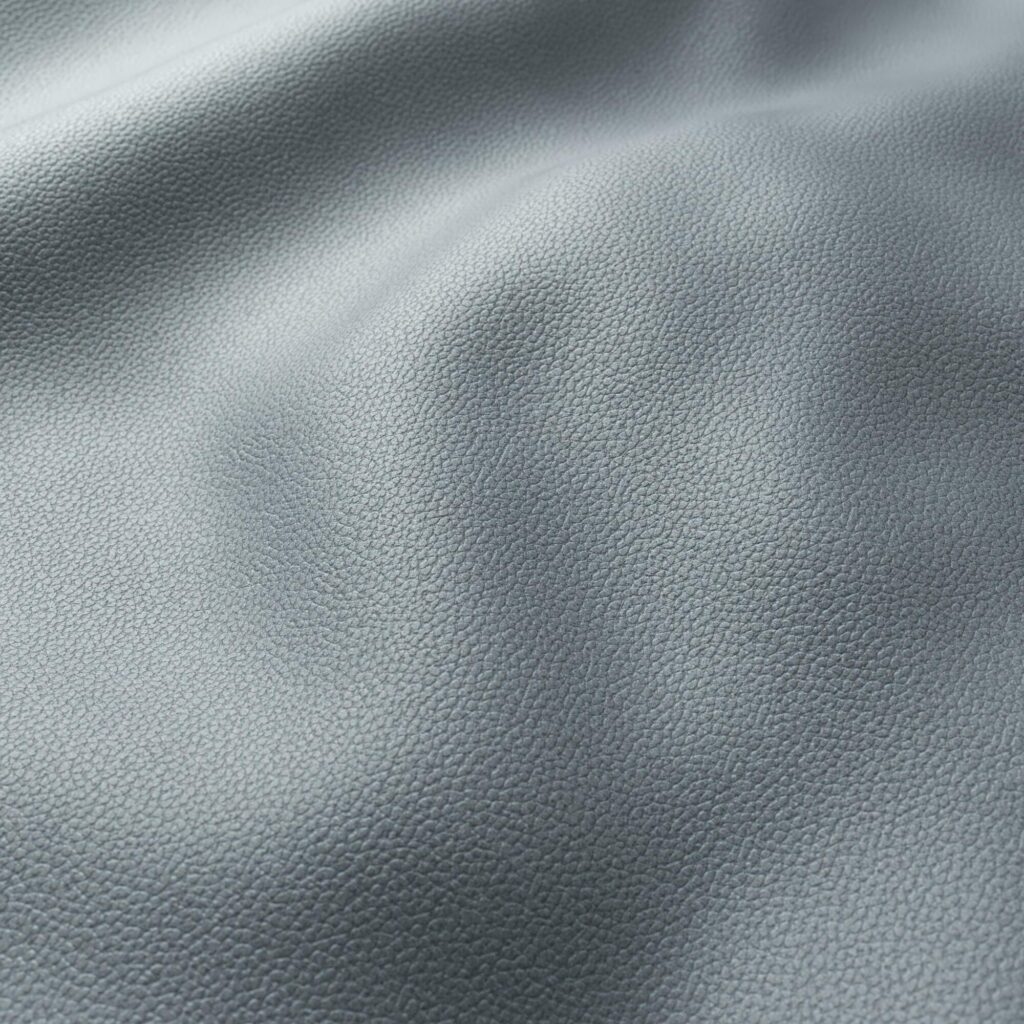
Illustrative image related to synthetic leather upholstery fabric
Pros: One of the key advantages of microfiber leather is its breathability, making it comfortable for extended use. It is also highly resistant to stains and easy to clean, which is beneficial for both residential and commercial applications.
Cons: The primary disadvantage is its higher cost compared to PU and PVC leather, which may limit its use in budget-conscious projects. Additionally, while it is durable, it may not be as resistant to extreme conditions as other synthetic options.
Impact on Application: Microfiber leather is ideal for high-end furniture, automotive interiors, and fashion accessories due to its premium appearance and comfort.
Considerations for International Buyers: Buyers should ensure that the microfiber leather meets international quality standards, particularly in Europe and the Middle East, where consumer expectations for material performance are high.
Summary Table of Synthetic Leather Upholstery Materials
| Material | Typical Use Case for synthetic leather upholstery fabric | Key Advantage | Key Disadvantage/Limitation | Relative Cost (Low/Med/High) |
|---|---|---|---|---|
| PU Leather | Residential and commercial furniture, automotive interiors | Soft texture, wide color range | Less durable in extreme temperatures | Medium |
| PVC Leather | Commercial furniture, healthcare facilities | High durability, cost-effective | Less breathable, environmental concerns | Low |
| Microfiber Leather | High-end furniture, automotive interiors | Luxurious feel, breathable | Higher cost, less extreme condition resistance | High |
This guide serves as a strategic resource for B2B buyers looking to make informed decisions regarding synthetic leather upholstery fabric. Understanding the properties and applications of each material will enable buyers to select the most suitable option for their specific needs.
In-depth Look: Manufacturing Processes and Quality Assurance for synthetic leather upholstery fabric
What Are the Main Stages in the Manufacturing Process of Synthetic Leather Upholstery Fabric?
The manufacturing of synthetic leather upholstery fabric involves several critical stages, each contributing to the final product’s quality and usability. The main stages include material preparation, forming, assembly, and finishing.
-
Material Preparation: This initial stage involves sourcing and selecting the appropriate raw materials. Common materials include polyurethane (PU) or polyvinyl chloride (PVC), which are chosen for their durability and flexibility. The fabric backing, often made from textiles like polyester or cotton, is also prepared during this phase. Quality control begins here, as the materials undergo inspection to ensure they meet required specifications.
-
Forming: In this stage, the selected polymer is applied to the fabric backing. This can be done through various techniques such as coating or laminating. The polymer is heated and then spread over the backing material, where it forms a flexible layer. This process often includes embossing, which gives the synthetic leather its characteristic grain and texture, closely resembling genuine leather.
-
Assembly: Following the forming stage, the synthetic leather is cut to size and sewn into products as required. This may involve creating upholstery for furniture, automotive interiors, or other applications. The assembly process must adhere to specific design and quality standards, ensuring that each piece is functional and aesthetically appealing.
-
Finishing: The final stage involves applying protective coatings to enhance durability and performance. This can include treatments for water resistance, stain resistance, and UV protection. Finishing also encompasses quality checks to confirm that the fabric meets all necessary specifications, such as colorfastness and abrasion resistance.
What Key Techniques Are Used in the Production of Synthetic Leather Upholstery Fabric?
Several key techniques are utilized throughout the manufacturing process to ensure high-quality synthetic leather upholstery fabric.
-
Coating and Laminating: These techniques are crucial for applying the polymer to the backing material. Coating involves a more extensive layer of polymer, while laminating typically uses thinner layers, allowing for different textures and finishes.
-
Embossing: This technique is employed to create a leather-like appearance. By using heated plates with specific patterns, manufacturers can imprint textures onto the surface of the synthetic leather.
-
Heat Setting: This process stabilizes the synthetic leather by using heat to set the polymer, enhancing its durability and flexibility.
-
Cutting and Sewing: Precision cutting tools and sewing machines are essential for ensuring that the final products meet exact dimensions and quality standards.
What Quality Assurance Measures Are Relevant for Synthetic Leather Upholstery Fabric?
Quality assurance (QA) is integral to the production of synthetic leather upholstery fabric, ensuring that the final products meet international and industry-specific standards.
-
International Standards: Compliance with ISO 9001 is essential for manufacturers, as it sets the criteria for a quality management system. Adhering to these standards helps ensure consistent quality and customer satisfaction.
-
Industry-Specific Standards: Depending on the application, manufacturers may need to comply with additional certifications such as CE marking for safety and environmental standards or API specifications for materials used in automotive applications.
What Are the QC Checkpoints in the Manufacturing Process?
Quality control (QC) checkpoints are strategically placed throughout the manufacturing process to monitor and verify quality at every stage.
-
Incoming Quality Control (IQC): This initial checkpoint assesses the quality of raw materials before they enter the production line. Materials that do not meet specifications are rejected.
-
In-Process Quality Control (IPQC): During manufacturing, IPQC monitors production processes to identify any deviations from the expected quality. This includes checking the consistency of the polymer application and the accuracy of embossing.
-
Final Quality Control (FQC): After the finishing stage, the finished products undergo FQC to ensure they meet all specified standards. This includes tests for durability, flexibility, and colorfastness.
How Can B2B Buyers Verify Supplier Quality Control?
B2B buyers, especially those operating in diverse international markets such as Africa, South America, the Middle East, and Europe, should adopt several strategies to verify supplier quality control.
-
Supplier Audits: Conducting regular audits of suppliers can help ensure that they adhere to quality standards. Buyers can assess the manufacturing processes, QA measures, and compliance with international standards.
-
Requesting Quality Reports: Buyers should ask suppliers for detailed quality reports that document the results of IQC, IPQC, and FQC. These reports provide insight into the manufacturing process and the quality of the products.
-
Third-Party Inspections: Engaging third-party inspection services can provide an unbiased assessment of the supplier’s quality control practices. This is particularly beneficial for buyers who may lack the resources to conduct their own audits.
What Are the QC and Certification Nuances for International B2B Buyers?
International B2B buyers must navigate various certification and quality control nuances when sourcing synthetic leather upholstery fabric.
-
Understanding Regional Standards: Different regions may have varying standards and certifications. For instance, products sold in Europe may require CE marking, while those in the Middle East might adhere to local safety standards. Familiarizing oneself with these regulations is crucial.
-
Cultural and Market Considerations: Buyers should consider cultural preferences and market demands when selecting synthetic leather. For example, certain regions may prefer specific textures or colors, influencing the choice of suppliers.
-
Sustainability and Eco-Friendliness: As sustainability becomes increasingly important in global markets, buyers should prioritize suppliers who use eco-friendly materials and processes. Certifications such as OEKO-TEX or Global Organic Textile Standard (GOTS) can indicate a commitment to sustainability.
In conclusion, understanding the manufacturing processes and quality assurance measures for synthetic leather upholstery fabric is vital for B2B buyers. By focusing on the manufacturing stages, quality control checkpoints, and supplier verification methods, buyers can make informed decisions and ensure they receive high-quality products that meet their specific needs.
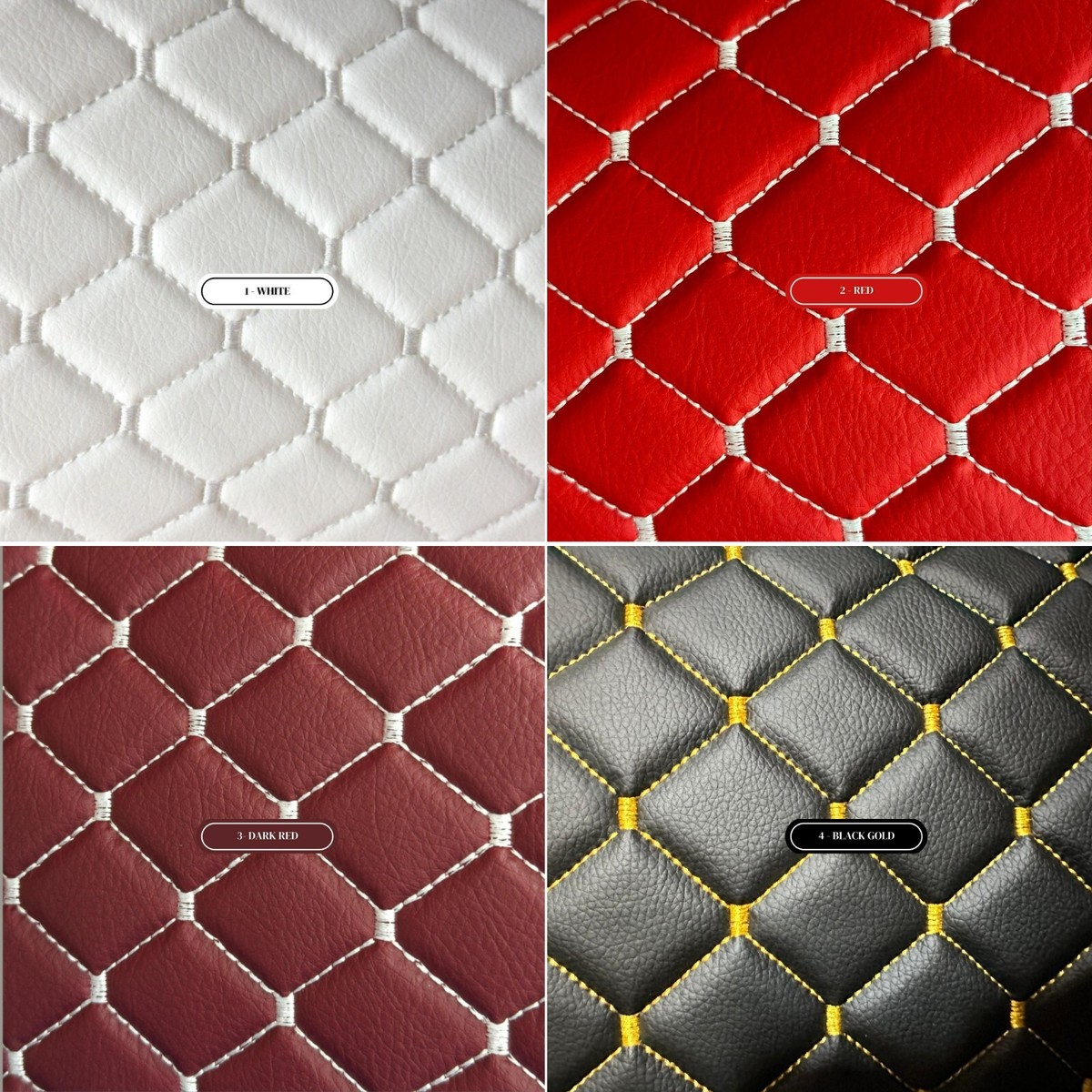
Illustrative image related to synthetic leather upholstery fabric
Practical Sourcing Guide: A Step-by-Step Checklist for ‘synthetic leather upholstery fabric’
In the competitive landscape of upholstery materials, sourcing synthetic leather requires a strategic approach. This guide offers a step-by-step checklist to help B2B buyers navigate the procurement process effectively, ensuring quality, cost efficiency, and suitability for their specific applications.
Step 1: Define Your Technical Specifications
Begin by identifying the specific requirements for your project. This includes understanding the intended use of the synthetic leather, whether for furniture, automotive, or marine applications. Consider key attributes such as durability, water resistance, and ease of maintenance, as these factors will influence the choice of material and supplier.
- Durability Requirements: Specify the abrasion resistance and weight tolerance needed.
- Environmental Conditions: Determine if the fabric needs to withstand extreme temperatures or humidity.
Step 2: Research and Identify Potential Suppliers
Conduct thorough research to identify suppliers that specialize in synthetic leather upholstery fabric. Utilize online platforms, trade shows, and industry networks to compile a list of potential vendors.
- Supplier Reputation: Look for suppliers with positive reviews and a history of reliability.
- Industry Experience: Prioritize suppliers who have experience in your specific market or application.
Step 3: Evaluate Product Variants
Not all synthetic leathers are created equal; evaluate the different types available such as PU leather and PVC. Each type has distinct characteristics that may be more suited for particular applications.
- Performance Features: Assess whether the fabric offers features like stain resistance, eco-friendliness, or UV protection.
- Aesthetic Options: Consider the color, texture, and finish that align with your design requirements.
Step 4: Request Samples for Testing
Before making a bulk purchase, request samples from shortlisted suppliers. Testing samples allows you to evaluate the look, feel, and performance of the fabric in real-world conditions.
- Testing for Durability: Perform scratch tests or water resistance checks to ensure the material meets your standards.
- Color Fastness: Assess how well the fabric holds its color under exposure to light and cleaning products.
Step 5: Verify Supplier Certifications and Compliance
Ensure that your potential suppliers hold relevant certifications that comply with industry standards. This is especially important if your products will be used in regulated sectors such as automotive or healthcare.
- Quality Assurance: Look for ISO certifications or other quality management systems.
- Environmental Compliance: Confirm adherence to environmental regulations regarding material sourcing and production processes.
Step 6: Negotiate Pricing and Terms
Once you’ve selected a supplier, engage in negotiations to finalize pricing and terms. Ensure you understand the pricing structure, including bulk discounts, shipping costs, and payment terms.
- Long-Term Relationships: Consider establishing long-term agreements for better pricing and reliability.
- Order Flexibility: Discuss minimum order quantities and return policies to accommodate your business needs.
Step 7: Establish a Quality Control Process
After placing an order, implement a quality control process to monitor the materials received. This step is vital to ensure that the synthetic leather meets the agreed specifications.
- Inspection Criteria: Define clear criteria for inspecting the quality of the fabric upon delivery.
- Feedback Loop: Create a system for providing feedback to the supplier, which can help improve future orders.
By following this comprehensive checklist, B2B buyers can effectively source synthetic leather upholstery fabric that meets their project needs while ensuring quality and compliance throughout the procurement process.
Comprehensive Cost and Pricing Analysis for synthetic leather upholstery fabric Sourcing
What Are the Key Cost Components in Sourcing Synthetic Leather Upholstery Fabric?
When evaluating the cost structure for synthetic leather upholstery fabric, several key components come into play. The primary cost factors include:
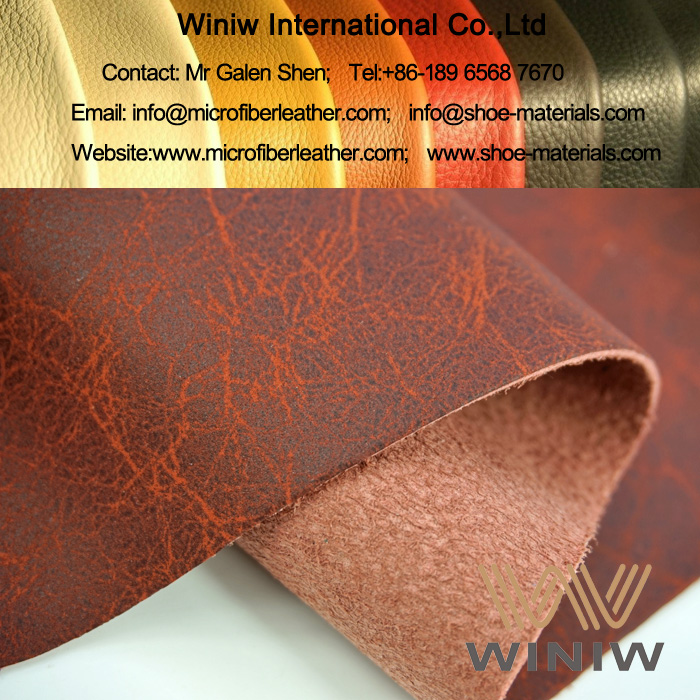
Illustrative image related to synthetic leather upholstery fabric
-
Materials: The choice between different synthetic leather types, such as PU (polyurethane) and PVC (polyvinyl chloride), significantly influences material costs. PU leather tends to be more expensive due to its superior quality and softness, while PVC is often more budget-friendly.
-
Labor: Labor costs can vary widely depending on the region of manufacturing. Countries with lower labor costs may offer more competitive pricing, but this can sometimes compromise quality.
-
Manufacturing Overhead: This includes fixed and variable costs associated with the production process, such as utilities, rent, and equipment maintenance. Efficient manufacturing processes can reduce these overheads, impacting overall pricing.
-
Tooling: Custom tooling may be necessary for specialized designs or patterns, which can add to initial costs. However, once amortized over larger production runs, these costs can become negligible.
-
Quality Control (QC): Implementing rigorous QC processes is essential to ensure product consistency and durability. While this adds to costs, it can prevent larger financial losses associated with defective products.
-
Logistics: Transportation and shipping costs can significantly affect the final price, especially for international buyers. Factors such as shipping distance, mode of transport, and customs duties must be considered.
-
Margin: Supplier margins can vary based on market competition and the supplier’s positioning. Understanding the typical margins within the industry can help buyers negotiate better deals.
How Do Price Influencers Affect Synthetic Leather Upholstery Fabric Costs?
Various factors can influence the pricing of synthetic leather upholstery fabric, including:
-
Volume and Minimum Order Quantity (MOQ): Larger orders typically lead to better pricing due to economies of scale. Suppliers are often willing to offer discounts on bulk purchases, making it advantageous for businesses to plan their orders accordingly.
-
Specifications and Customization: Custom specifications, such as specific colors, textures, or treatments (like stain resistance), can increase costs. Buyers should balance the need for customization with budget constraints.
-
Material Quality and Certifications: Higher-quality materials and certifications (e.g., eco-friendly, fire retardant) may come at a premium. However, they can also enhance the product’s marketability and longevity, justifying the investment.
-
Supplier Factors: The reliability and reputation of the supplier can affect pricing. Established suppliers may charge more but often provide better quality and service, reducing the risk of issues down the line.
-
Incoterms: Understanding Incoterms is crucial for international transactions, as they dictate the responsibilities of buyers and sellers regarding shipping, insurance, and tariffs. This knowledge can help avoid unexpected costs.
What Buyer Tips Can Help Optimize Costs for Synthetic Leather Upholstery Fabric?
To maximize cost efficiency when sourcing synthetic leather upholstery fabric, consider the following strategies:
-
Negotiation: Always negotiate prices and terms with suppliers. Establishing a good relationship can lead to better deals, especially for repeat orders.
-
Cost-Efficiency: Assess the total cost of ownership, not just the purchase price. Consider factors such as durability, maintenance, and potential warranty claims to evaluate the long-term value of the fabric.
-
Pricing Nuances for International Buyers: International buyers, particularly from regions like Africa, South America, and the Middle East, should be aware of currency fluctuations and local tariffs that can impact overall costs. It may be beneficial to work with local agents familiar with these nuances.
-
Research and Compare Suppliers: Engage with multiple suppliers to compare pricing, quality, and service levels. This not only helps in identifying the best deal but also provides leverage in negotiations.
Disclaimer on Pricing
Prices for synthetic leather upholstery fabric can fluctuate based on market conditions, material availability, and production costs. Therefore, it is advisable for buyers to seek updated quotes and conduct thorough market research before making purchasing decisions.
Alternatives Analysis: Comparing synthetic leather upholstery fabric With Other Solutions
When evaluating upholstery options, businesses often seek materials that combine durability, aesthetic appeal, and cost-effectiveness. Synthetic leather upholstery fabric has gained significant traction as a versatile alternative to traditional leather. However, understanding how it stacks up against other materials is crucial for making informed purchasing decisions. Below, we explore comparisons between synthetic leather and two viable alternatives: genuine leather and fabric upholstery.
| Comparison Aspect | Synthetic Leather Upholstery Fabric | Genuine Leather | Fabric Upholstery |
|---|---|---|---|
| Performance | Highly durable and water-resistant | Extremely durable but can crack over time | Less durable, prone to wear and tear |
| Cost | 75% cheaper than genuine leather | High cost per hide | Generally affordable |
| Ease of Implementation | Widely available, easy to install | Requires skilled labor for proper installation | Easy to handle, requires basic sewing skills |
| Maintenance | Low maintenance, easy to clean | Requires special care | Regular cleaning needed, susceptible to stains |
| Best Use Case | Ideal for commercial and residential projects | Luxury applications, high-end furniture | Budget-friendly projects, casual settings |
What Are the Pros and Cons of Genuine Leather Compared to Synthetic Leather?
Genuine leather is revered for its luxurious feel and aesthetic appeal. Its natural fibers offer a unique texture and breathability that synthetic materials often struggle to replicate. However, genuine leather comes at a significantly higher cost and requires meticulous maintenance to prevent cracking and deterioration. Additionally, it is less resistant to moisture, making it unsuitable for environments where spills are common. For businesses focused on high-end products, genuine leather may be ideal, but its cost and upkeep can be prohibitive.
How Does Fabric Upholstery Compare to Synthetic Leather Upholstery Fabric?
Fabric upholstery is another alternative that offers versatility and affordability. With a wide range of textures and colors, fabric can be tailored to fit various design preferences. However, it often lacks the durability of synthetic leather, making it more susceptible to stains and wear over time. While fabric is generally easier to handle during installation, it may require more frequent maintenance and cleaning. For businesses operating on a tighter budget or targeting casual markets, fabric upholstery can serve as a practical option, albeit with limitations in longevity and resistance.
How Should B2B Buyers Choose the Right Upholstery Solution?
Selecting the appropriate upholstery solution hinges on understanding specific business needs, including budget constraints, desired aesthetics, and intended use. For high-traffic environments like restaurants or healthcare facilities, synthetic leather offers an optimal blend of durability and ease of maintenance. Conversely, businesses targeting luxury markets might lean towards genuine leather for its premium appeal. Fabric upholstery may be best suited for less formal settings where cost efficiency is paramount. Ultimately, evaluating the unique requirements of the project will guide B2B buyers to the most suitable upholstery solution.
Essential Technical Properties and Trade Terminology for synthetic leather upholstery fabric
What Are the Key Technical Properties of Synthetic Leather Upholstery Fabric?
When selecting synthetic leather upholstery fabric for various applications, understanding its technical properties is crucial for B2B buyers. Here are some of the most important specifications:
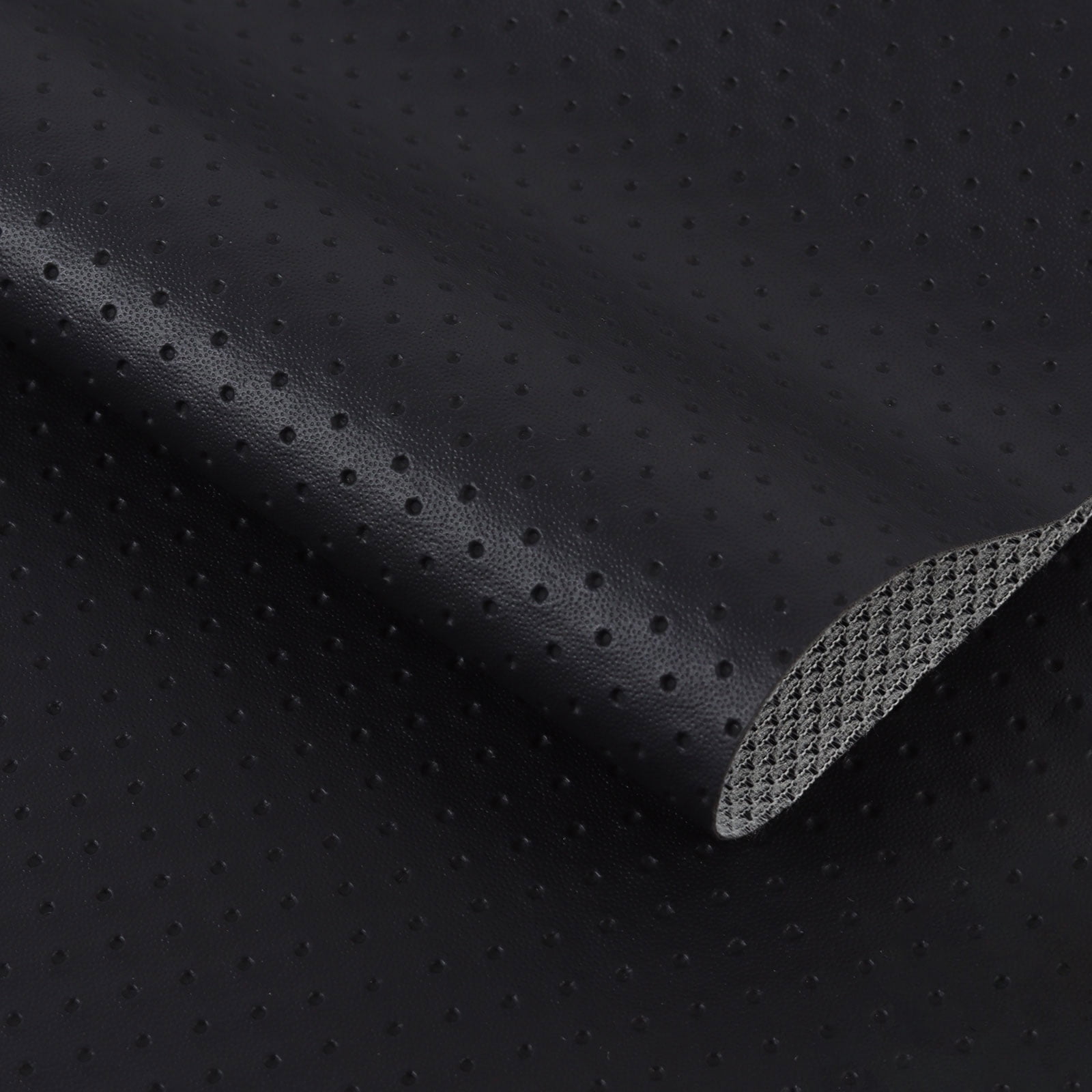
Illustrative image related to synthetic leather upholstery fabric
1. Material Composition
Synthetic leather is primarily made from polyurethane (PU) or polyvinyl chloride (PVC). PU leather tends to be softer and more pliable, closely resembling genuine leather, while PVC is often more durable and water-resistant. Knowing the material composition helps buyers determine the fabric’s suitability for specific applications, such as automotive or marine upholstery.
2. Abrasion Resistance
Abrasion resistance measures how well the fabric can withstand wear and tear. This property is crucial for upholstery that experiences frequent use, such as furniture in hotels or restaurants. Fabrics with a high abrasion resistance rating (usually tested with the Martindale method) will last longer, reducing replacement costs and enhancing customer satisfaction.
3. Water Resistance
Water resistance indicates the fabric’s ability to repel water, making it easier to clean and maintain. This property is particularly important for outdoor furniture or marine applications, where exposure to moisture is common. A water-resistant fabric will not only prolong the lifespan of the upholstery but also minimize the risk of mold and mildew.
4. Fire Retardancy
Fire retardancy is a critical specification for upholstery used in commercial settings, such as healthcare facilities or public transportation. Fabrics that meet specific fire safety standards (like CAL117 in the U.S.) reduce the risk of fire hazards, thereby protecting both users and businesses from potential liabilities.
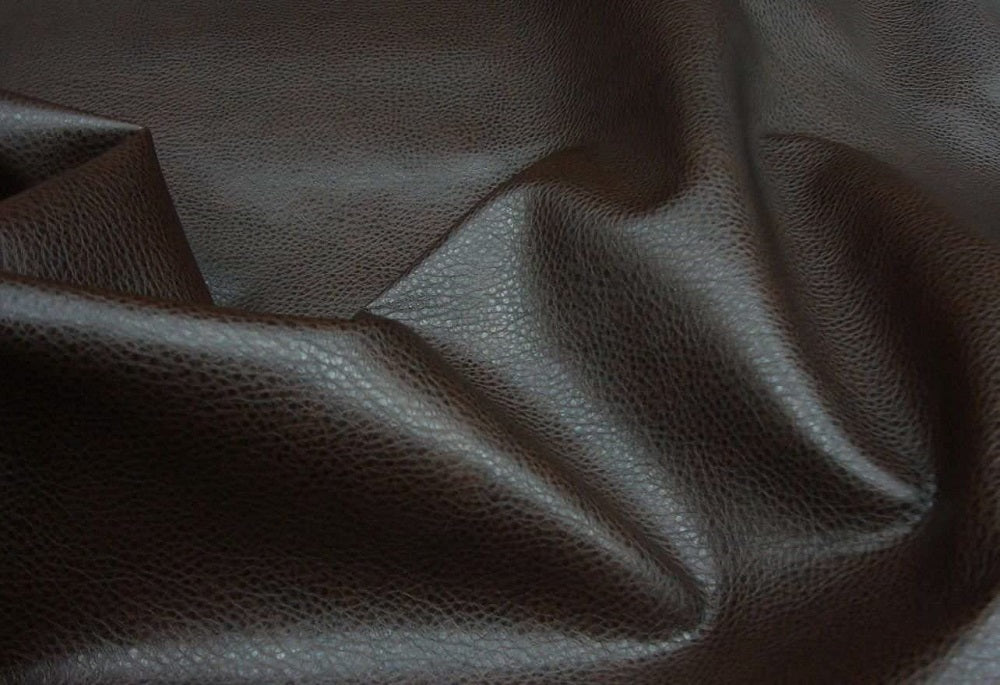
Illustrative image related to synthetic leather upholstery fabric
5. Colorfastness
Colorfastness refers to the fabric’s ability to retain its color when exposed to light, washing, or abrasion. This property is vital for maintaining the aesthetic appeal of upholstery over time. Fabrics that score high in colorfastness will ensure that the upholstery remains vibrant, reducing the need for frequent replacements.
6. Thickness and Weight
The thickness and weight of synthetic leather affect its drapability and usability in various applications. Thicker fabrics may offer more durability but could be less flexible, impacting their use in intricate designs. Understanding these dimensions helps buyers select the right fabric for their specific projects, ensuring optimal performance.
What Are Common Trade Terms Used in the Synthetic Leather Industry?
Familiarity with industry jargon can streamline communication and enhance decision-making. Here are some essential terms:
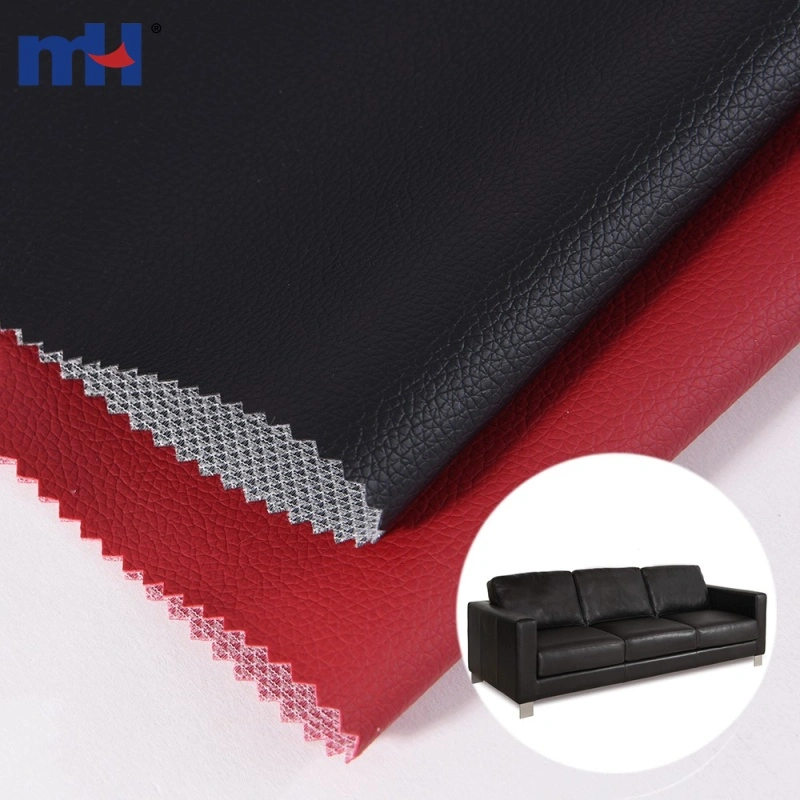
Illustrative image related to synthetic leather upholstery fabric
1. OEM (Original Equipment Manufacturer)
An OEM refers to a company that produces parts or products that may be marketed by another manufacturer. In the synthetic leather industry, understanding OEM relationships can help buyers identify reliable suppliers for upholstery materials tailored to their specifications.
2. MOQ (Minimum Order Quantity)
MOQ is the smallest quantity of a product that a supplier is willing to sell. This term is crucial for B2B buyers to consider when budgeting and planning inventory. Understanding the MOQ can help businesses manage cash flow and avoid overstocking.
3. RFQ (Request for Quotation)
An RFQ is a formal request for a price quote from suppliers. It is often used in the procurement process to gather price estimates for specific quantities and specifications of synthetic leather upholstery fabric, allowing buyers to compare options effectively.
4. Incoterms (International Commercial Terms)
Incoterms are a set of international rules that define the responsibilities of sellers and buyers in global trade. Understanding these terms, such as FOB (Free On Board) or CIF (Cost, Insurance, and Freight), is essential for B2B buyers to manage shipping costs and logistics effectively.
5. Lead Time
Lead time is the period between placing an order and receiving the goods. Knowledge of lead times is vital for planning inventory and production schedules, especially for businesses that rely on timely delivery to meet customer demands.
By grasping these technical properties and trade terms, B2B buyers can make informed decisions when sourcing synthetic leather upholstery fabric, ensuring they choose the best materials for their specific needs.
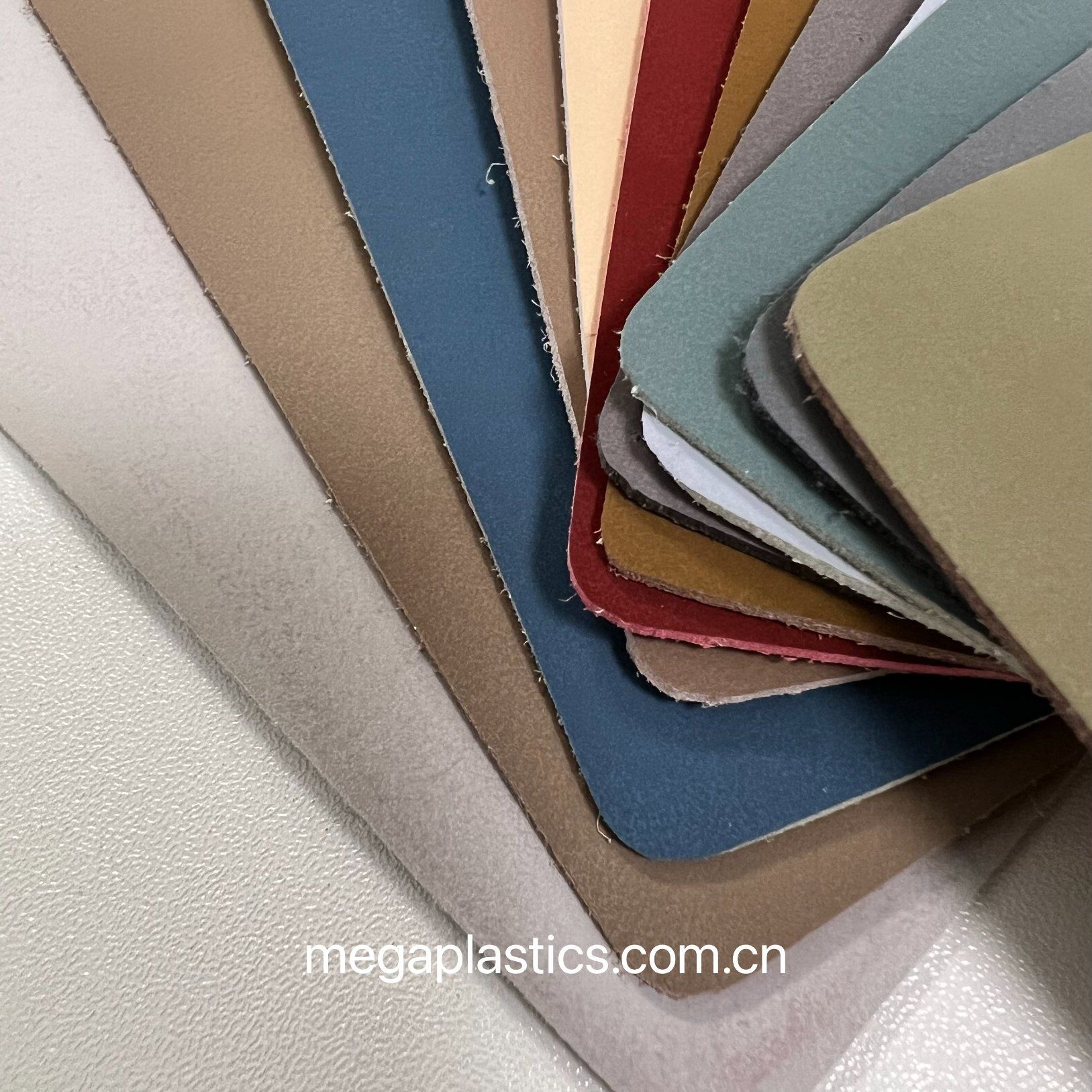
Illustrative image related to synthetic leather upholstery fabric
Navigating Market Dynamics and Sourcing Trends in the synthetic leather upholstery fabric Sector
What Are the Current Market Dynamics and Key Trends in Synthetic Leather Upholstery Fabric?
The synthetic leather upholstery fabric market is witnessing significant growth, driven by increasing demand across various sectors such as automotive, furniture, and fashion. Key factors propelling this market include cost-effectiveness, durability, and versatility. For international B2B buyers, particularly in regions like Africa, South America, the Middle East, and Europe, there are notable trends shaping sourcing strategies. Firstly, the rise of e-commerce platforms has streamlined procurement processes, allowing buyers to access a wider range of products and suppliers globally. Secondly, the integration of advanced technology in manufacturing, such as digital printing and automation, is enhancing product customization and reducing lead times.
Furthermore, the demand for innovative features—such as stain resistance, water repellency, and eco-friendly materials—is influencing purchasing decisions. B2B buyers are increasingly looking for products that not only meet aesthetic and functional requirements but also align with their sustainability goals. In regions like Nigeria and Brazil, where economic growth is rapidly evolving, the ability to source high-quality synthetic leather at competitive prices is crucial for maintaining a competitive edge in local markets.
How Is Sustainability and Ethical Sourcing Shaping the Synthetic Leather Upholstery Fabric Market?
Sustainability has become a cornerstone of modern procurement strategies in the synthetic leather upholstery fabric sector. As environmental concerns rise globally, B2B buyers are prioritizing materials that minimize ecological impact. Synthetic leather, particularly polyurethane (PU) leather, is often viewed as a more sustainable alternative to genuine leather, as it reduces the demand for animal hides and the associated environmental degradation from livestock farming.
The importance of ethical supply chains cannot be overstated; businesses are increasingly held accountable for their sourcing practices. Buyers are encouraged to seek suppliers who adhere to ethical standards and can provide certifications for their materials. Green certifications, such as OEKO-TEX® and Global Recycled Standard (GRS), are becoming vital in the selection process, ensuring that the materials used are free from harmful substances and produced under socially responsible conditions. This focus on sustainability not only meets consumer demands but also enhances brand reputation and loyalty in increasingly eco-conscious markets.
How Has the Synthetic Leather Upholstery Fabric Sector Evolved Over Time?
The synthetic leather upholstery fabric sector has evolved significantly since its inception in the early 20th century. Initially developed as a cost-effective substitute for genuine leather, advances in manufacturing processes have transformed synthetic leather into a versatile and desirable material in its own right. The introduction of polyurethane (PU) leather in the 1960s marked a significant milestone, as it provided a softer, more durable alternative that closely mimicked the texture and appearance of real leather.
Over the decades, the sector has adapted to meet changing consumer preferences and technological advancements, leading to the development of innovative products that cater to various applications, including automotive upholstery, furniture, and marine uses. Today, the market is characterized by a strong emphasis on performance features and sustainability, reflecting the growing demand for high-quality, ethically sourced materials that align with modern environmental standards. This evolution presents a unique opportunity for B2B buyers to leverage synthetic leather not just as a cost-effective option but as a strategic asset in their product offerings.
Frequently Asked Questions (FAQs) for B2B Buyers of synthetic leather upholstery fabric
-
How do I choose the right synthetic leather upholstery fabric for my project?
Selecting the appropriate synthetic leather involves assessing several factors, including the intended application (e.g., residential, commercial, automotive), desired durability, and maintenance requirements. For high-traffic areas, look for fabrics with enhanced abrasion resistance and easy-clean properties. Additionally, consider the aesthetic appeal—colors, textures, and patterns that align with your brand or design vision. Finally, ensure that the fabric meets any industry-specific regulations or standards pertinent to your market. -
What are the key differences between PU leather and PVC leather?
PU leather, or polyurethane leather, is known for its softness and flexibility, closely mimicking the feel of genuine leather. It is more environmentally friendly and often has better breathability than PVC leather. In contrast, PVC leather is generally more durable and water-resistant but can be less comfortable. Depending on your project requirements—such as cost considerations, application, and environmental impact—choose the type that best suits your needs. -
What minimum order quantities (MOQs) should I expect when sourcing synthetic leather upholstery fabric?
MOQs can vary significantly among suppliers and may depend on the type of fabric, customization options, and shipping logistics. Typically, you may find MOQs ranging from 50 to 500 yards for standard fabrics, while custom designs might require higher quantities. It’s advisable to communicate directly with suppliers to negotiate MOQs that align with your purchasing capacity and project timelines. -
How can I ensure the quality of synthetic leather upholstery fabric from my suppliers?
To guarantee quality, request samples before committing to a bulk order. Evaluate the fabric’s texture, durability, and colorfastness. Additionally, inquire about certifications or compliance with industry standards, such as fire resistance or environmental sustainability. Establishing a relationship with reputable suppliers and reviewing their past performance can also provide assurance regarding product quality. -
What payment terms are common in B2B transactions for synthetic leather upholstery fabric?
Payment terms can vary but typically include options like upfront payments, 30-60 days after shipment, or a letter of credit. Discussing payment terms early in negotiations is crucial to ensure alignment with your cash flow and budget. Some suppliers may offer discounts for early payments or larger orders, so it’s beneficial to explore all options available to maximize your purchasing power. -
What logistics considerations should I keep in mind when importing synthetic leather upholstery fabric?
When importing, consider shipping methods, lead times, and customs regulations specific to your country. Air freight is faster but more expensive, while sea freight is cost-effective for larger orders but takes longer. Ensure compliance with import duties and taxes to avoid unexpected costs. Working with a logistics partner experienced in textile imports can streamline this process and help you navigate any complexities. -
Can I customize synthetic leather upholstery fabric for my brand?
Yes, many suppliers offer customization options, including unique colors, textures, and patterns tailored to your brand’s identity. Minimum order quantities and additional costs may apply for custom designs. It’s advisable to discuss your specific requirements with potential suppliers to understand their capabilities and timelines for delivering customized products. -
What are the common uses for synthetic leather upholstery fabric in various industries?
Synthetic leather upholstery fabric is versatile and used across multiple industries. Common applications include residential furniture, automotive interiors, commercial spaces like hotels and restaurants, outdoor furniture, and marine upholstery. Understanding the specific needs of each application—such as durability, weather resistance, and ease of cleaning—will help you select the most suitable fabric for your projects.
Top 5 Synthetic Leather Upholstery Fabric Manufacturers & Suppliers List
1. Fabric Warehouse – Faux Leather Upholstery Fabric
Domain: fabricwarehouse.com
Registered: 1996 (29 years)
Introduction: Faux Leather Upholstery Fabric available by the yard. Common names include faux leather, pleather, vegan leather, synthetic leather, and simulated leather. Patterns available include ostrich, peacock, snake, crocodile, alligator, and cow. Fabric width is 54 inches. Suitable for upholstery projects like stools, benches, and armchairs. Marine vinyl options available for boat restoration. Various pro…
2. Fabric Mill – Faux Leather & Vinyl Fabrics
Domain: fabricmill.com
Registered: 1997 (28 years)
Introduction: Faux leather and vinyl fabrics offer stylish, durable alternatives to genuine leather. They are easy to work with and perfect for upholstery, cushions, and accessories. Available by the yard, these fabrics combine practicality with a sleek, modern look. Key characteristics include:
– Durability: 50,000 to 100,000 double rubs, varies by fabric type.
– Weight: Medium to heavy.
– Opaqueness: Opaque.
…
3. Sewport – Faux Leather Solutions
Domain: sewport.com
Registered: 2015 (10 years)
Introduction: Faux leather, also known as synthetic leather, is a petroleum-based alternative to genuine leather. It is soft to the touch, water-resistant, and highly resistant to stains, making it easy to clean. While less durable than real leather, it is resistant to abrasions and cuts, ideal for upholstery in homes with children or pets. Faux leather can be produced in various colors and is popular for outer…
4. Big Z Fabric – Faux Leather Vinyl
Domain: bigzfabric.com
Registered: 2010 (15 years)
Introduction: Faux Leather Vinyl Fabric – Durable & Stylish for Upholstery. Huge selection of prints and patterns available. Sold by the yard. Regular updates on new arrivals and special pricing through the blog. Featured products include Storm Shield Marine Vinyl, Alligator Embossed Vinyl, DuroLast® Marine Vinyl, AquaGuard® Crocodile Marine Vinyl, and various embossed and patterned faux leather options. Fabric…
5. Sailrite – Quality Faux Leather
Domain: sailrite.com
Registered: 1996 (29 years)
Introduction: Faux Leather, Vinyl Leather; Quality faux leather available in a variety of natural and bright colors; Suitable for upholstery applications like couches; Durable; All faux leather in stock and ready to ship; Fabric samples available.
Strategic Sourcing Conclusion and Outlook for synthetic leather upholstery fabric
In conclusion, strategic sourcing of synthetic leather upholstery fabric presents a multitude of advantages for international B2B buyers. With its affordability—often up to 75% less than genuine leather—alongside benefits like water and stain resistance, and a wide range of customizable colors and textures, synthetic leather is an appealing alternative for diverse applications in residential, commercial, and automotive markets. The durability and easy maintenance of these materials further enhance their attractiveness, especially in regions where climate and usage demands are more challenging.
For buyers from Africa, South America, the Middle East, and Europe, leveraging strategic sourcing can optimize supply chains and enhance competitive edge. Understanding local market trends and preferences will be crucial in selecting the right suppliers and materials. As the demand for sustainable and ethical products continues to grow, embracing synthetic leather not only meets consumer expectations but also supports environmentally-friendly initiatives.
Looking ahead, now is the time for businesses to invest in strategic sourcing partnerships that prioritize quality and innovation in synthetic leather upholstery. By doing so, you position your brand to thrive in an evolving marketplace, ensuring long-term success and customer satisfaction.
Important Disclaimer & Terms of Use
⚠️ Important Disclaimer
The information provided in this guide, including content regarding manufacturers, technical specifications, and market analysis, is for informational and educational purposes only. It does not constitute professional procurement advice, financial advice, or legal advice.
While we have made every effort to ensure the accuracy and timeliness of the information, we are not responsible for any errors, omissions, or outdated information. Market conditions, company details, and technical standards are subject to change.
B2B buyers must conduct their own independent and thorough due diligence before making any purchasing decisions. This includes contacting suppliers directly, verifying certifications, requesting samples, and seeking professional consultation. The risk of relying on any information in this guide is borne solely by the reader.


